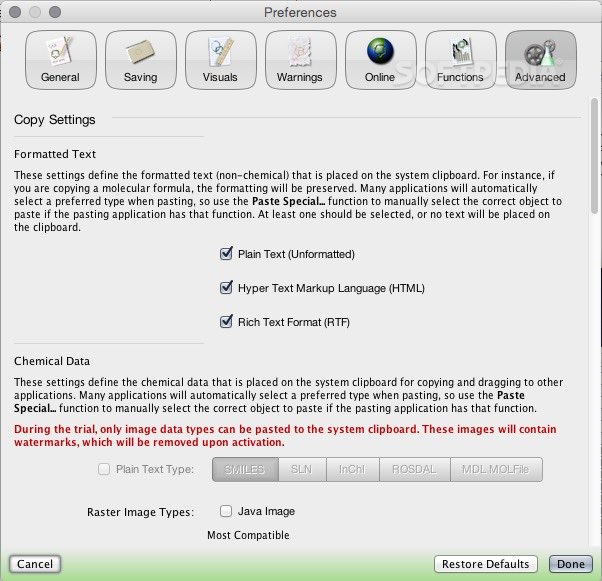


SMILES (Simplified Molcular Input Line Entry System) is a chemical language with which atom and bond symbols can be represented by using theĪSCII characters. There are six layers which are represented by an InCHI: Where InCHIs are created following three steps: Normalization Canonicalization Serialization. Therefore, IUPAC determines a nomenclature It is designed in a way that a single compound produces always the same identifier. Modifications of positions of functional groups or the allylsystem can lead to a loss of or modification of mVOCs.Īn InCHI ( IUPAC International Chemical Identifier) consists of characters which distinctly represent a chemical substance. Which consists of carbonyl-, ester-, hydroxyl-, or alcoxy-moieties as well as hetero aromatic analoges.

The moities are parts of a molecule includingįor example, an ester functional group is divided into an alcohol and an acyl moiety.ģ.3 What physical and chemical characteristics of mVOCs are there?ĭetermining for mVOC charcteristics is not the chemical reactivity but a poorly polarĪnd a highly hydrophobic part of the molecule. Also they affect the chemical and physicalĬharacteristics of the whole molecule. With heteroatoms and without heteroatoms. These groups are divided into two parts due to the number of atoms: Chemical compounds which have the same functional group react in the same or In organic chemistry, functional groups are specific groups of atoms which are responsible These compounds derive from the secondary metabolism (Achyuthan et al. Due to their low-to-moderate hydrophilicity, VOCs can dissolve in water and disperse at the air-water-interphase, excerting their infochemical effects widely, temporally and spatially. VOCs can travel fr from from their source and pass through atmosphere, soil and water.

Due to their low boiling point, such compounds can readily transform from liquid phase to gaseous phaase or from solid phase to gas phase (sublimation). Hey are evaporating due to their low molecular weight (<300D), boiling point and high vapure pressure under ambient temperature (20oC, 101.3 kPa, defined by NIST, USA). 3.1 What are microbial volatile organic compounds?


 0 kommentar(er)
0 kommentar(er)
